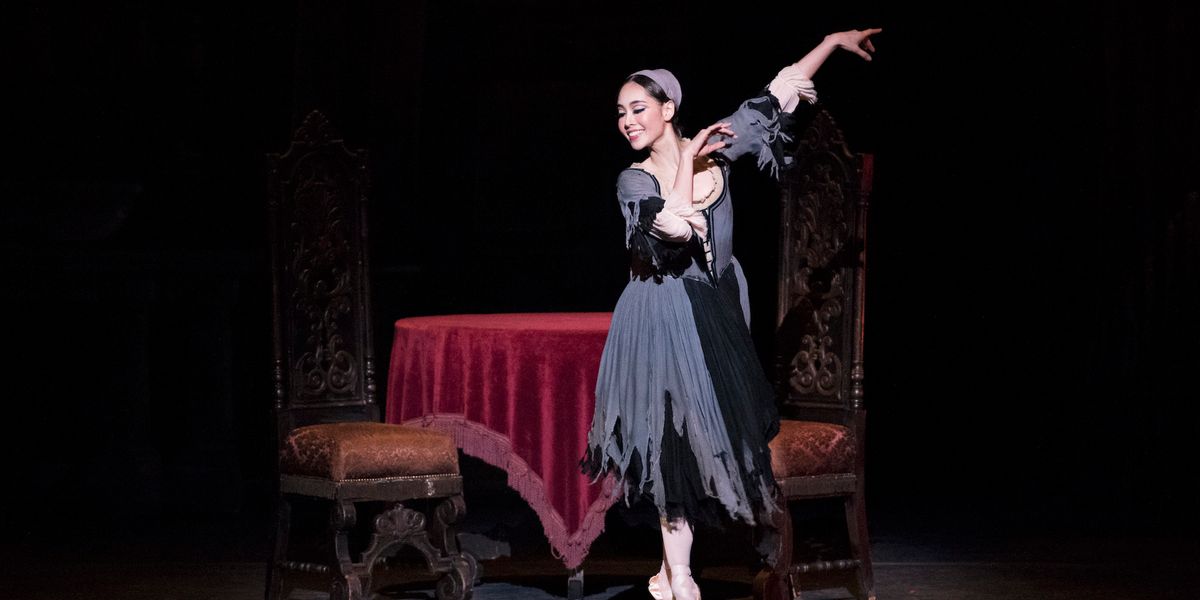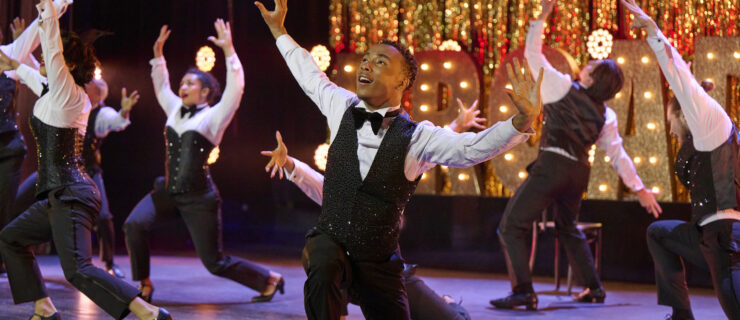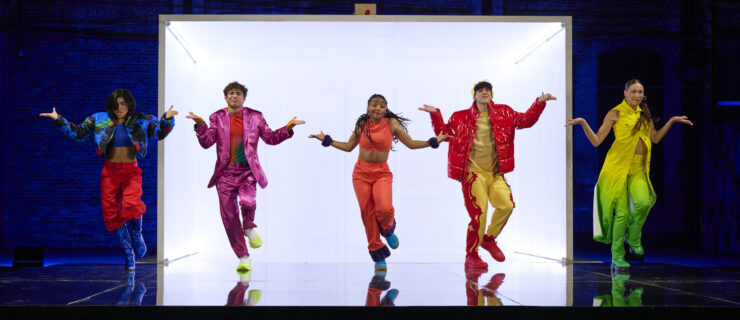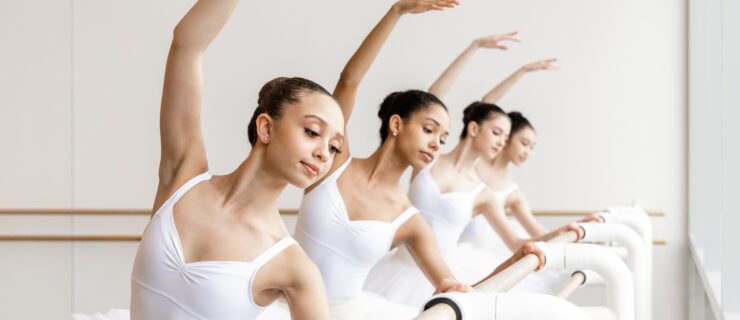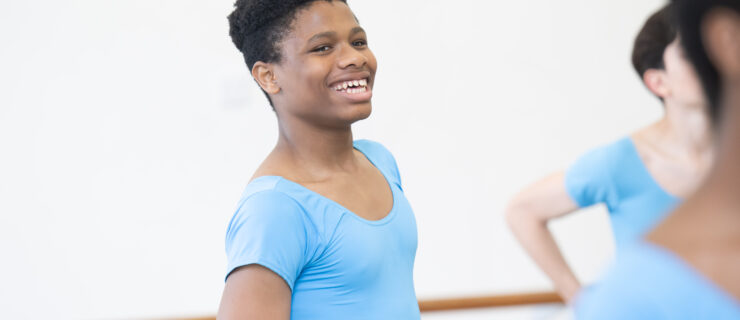5 Principal Dancers on the Ballet Steps That Still Challenge Them
Their technique might seem effortless onstage, but even the most seasoned ballet professionals have that one step that still drives them crazy. We asked five principal dancers to open up about the skills they still find challenging, and how they’re working to finesse them.

Dana Benton as Kitri in Don Quixote (Francisco Estevez, courtesy Colorado Ballet)
Dana Benton, Colorado Ballet
Step-over pirouettes (“lame ducks”)
Lame ducks often feel as funky as their name sounds. For Colorado Ballet principal Dana Benton, the pesky pirouette has always been a nuisance. “They’re one of my least favorite turns,” Benton says. She has specific memories of a performance early in her career where the turn got the best of her. “During the peasant pas in Giselle, there are a ton of step-overs, and it was just a hot mess—a lot of hopping around,” she says, with a laugh.
But after all these years, Benton has finally figured out what works for her: “I have to think about staying upright,” she says. She’s also scaled back her preparation so she can keep control of the turn. “I almost do a demi-pointe preparation instead of a deep plié, which may not quite be proper technique, but it seems to keep my hips level.”

Sarah Lane as Princess Praline in Alexei Ratmansky’s Whipped Cream (Doug Gifford, courtesy American Ballet Theatre)
Sarah Lane, American Ballet Theatre
Fouettés
American Ballet Theatre principal Sarah Lane considers herself a natural turner. But when it comes to one of ballet’s most famous turns, she often struggles. “With fouettés, I don’t always believe in myself,” Lane says. She’s generally a slower turner, she says, and relies more on feeling out her balance than she does on her spot. Add bright stage lights, and you’ve got a recipe for the wobbles.
Lane had a memorable fouetté fiasco 10 years ago, while performing Don Quixote in Italy—on a raked stage. She puts it bluntly: “It was rough.” Since that minor disaster, she’s worked on new ways to keep herself centered and stable during fouettés. “It sounds kind of weird, but sometimes I think about doing a Gyrotonic abdominal ‘cradle’ position, but without letting my shoulders go forward,” she says.

Alexander Peters in George Balanchine’s Stravinsky Violin Concerto (Alexander Iziliaev, courtesy Miami City Ballet)
Alexander Peters, Miami City Ballet
Double saut de basque
For Miami City Ballet principal Alexander Peters, the many double sauts de basque—on both the left and the right—peppered throughout his repertoire have proven a challenge. “The step is difficult because it requires strength, coordination, and the ability to really find your center and your spot and that rhythm without having any tangible sense of where the floor is,” Peters says. He recalls a performance several years ago where all of those factors got the best of him: He was doing a role that requires several double sauts de basque on each side in Alexei Ratmansky’s Concerto DSCH. “I did the first one to the left and it was great, and then I had two more to the right following right after,” he says. “By the time I got to the second one to the right, I was on the floor.”
Since then, he’s learned to fight the urge to muscle through the tricky step. He starts slowly in rehearsal, first marking, and then working his way up to a single saut de basque, or even doing simple step-over turns to get the sensation of “stacking” his body straight on top of his working leg. “I do that to both sides, so I can figure out how much momentum I really need, how I should time the rhythm of my spot, and how quickly I need to arrive in passé,” he says.

Han as Coppélia in Coppélia (Brooke Trisolini, courtesy Boston Ballet)
Seo Hye Han, Boston Ballet
Fifth position
Even principal dancers still struggle with the basics—and for Boston Ballet principal Seo Hye Han, sometimes the hardest thing is to make sure she’s always hitting fifth position correctly. “Audiences are actually very impressed when you’re making super-secure fifth positions, because it’s a beautiful line,” she says. She says ballets like Swan Lake and Sleeping Beauty are particularly difficult, because their choreography often relies on clean fifths. “The first time I did Sleeping Beauty with Boston Ballet, Aurora’s first variation”—a two-minute solo rooted in sequences of fifth positions and arabesques—”felt like a blur, because I wasn’t getting the fifth position right.”
Han has found that repetition is key. “Before I go onstage, I always try to make fifth position flat and on pointe, every time,” she says. “That helps keep me on center and gets me warm, too.”

Anthony Huxley in Balanchine’s Chaconne (Paul Kolnik, courtesy New York City Ballet)
Anthony Huxley, New York City Ballet
Double cabrioles
Double cabrioles are a bit of a rarity in New York City Ballet principal Anthony Huxley‘s repertoire, which has made it hard for him to get comfortable with the difficult step. If you don’t produce two distinct beats, “sometimes it just kind of looks like you’re scratching your foot in the air,” he says, with a chuckle. He remembers a performance of George Balanchine’s Coppélia where he ended up fudging some cabriole-filled diagonals. “To the right—my more coordinated side—it felt pretty good,” he says. “Then I went to the left, and it just wasn’t working.”
To avoid further foot-scratching moments, Huxley has since become more precise about placement during the grand jump. “I try to make sure I’m crossing my legs enough that they do actually beat on top of each other, instead of just kind of going past each other,” he says. “If you don’t cross enough, you won’t get that nice, inner-thigh feeling of beating ‘one-two.’ ”
